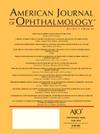Deep Learning Approach Readily Differentiates Papilledema, Non-Arteritic Anterior Ischemic Optic Neuropathy, and Healthy Eyes
IF 4.1
1区 医学
Q1 OPHTHALMOLOGY
引用次数: 0
Abstract
OBJECTIVE
Deep learning (DL) has been used in differentiating a range of ophthalmic conditions. We describe a model to distinguish among fundus photos of acquired optic disc swelling due to idiopathic intracranial hypertension (IIH), non-arteritic anterior ischemic optic neuropathy (NAION), and healthy eyes.
DESIGN
Development and validation of a DL diagnostic algorithm.
SUBJECTS, PARTICIPANTS, AND/OR CONTROLS
Our model was trained and validated on 15 088 fundus photos from 5866 eyes, including eyes with IIH with a Frisén grade ≥1 (418), acute NAION (780), and healthy controls (4668). We performed external validation on an additional 1126 photos from 928 eyes across these groups. All images were obtained from randomized and nonrandomized clinical trials, publicly available datasets, and real-world clinical sources.
METHODS
After preprocessing images to standardize optic disc position, we fine-tuned a ResNet-50 model. Performance was evaluated using 5-fold cross-validation, with metrics such as accuracy, area under the receiver operating characteristic curve (AUC-ROC), precision, recall, F1 scores, and confusion matrices calculated. We applied gradient-weighted class activation mapping to generate visual activation maps highlighting the regions of interest in the fundus images. External validation evaluation was performed with majority voting of our cross-validated models.
MAIN OUTCOME MEASURES
The primary outcome measures were the model's overall accuracy, class-wide AUC-ROC, precision, recall, F1 scores, and confusion matrices.
RESULTS
The model achieved an internal validation accuracy of 96.2%, with a macro-average AUC-ROC of 0.995. F1 scores ranged from 0.90 to 0.97 for all classes. The external validation set had an accuracy of 93.6%, F1 scores from 0.90 to 0.95, and a macro-average AUC-ROC of 0.980. Activation maps consistently highlighted the optic disc, with emphasis on the inferior optic disc for IIH, superior optic disc for NAION, and the entire optic disc for healthy eyes.
CONCLUSIONS
Our study demonstrates the potential of fundus-based DL models to accurately distinguish among IIH, NAION, and healthy eyes, providing a potentially valuable diagnostic method. With its strong discriminative capabilities, this model can be an important tool for neuro-ophthalmic assessment, particularly when access to specialized neuro-ophthalmologists is limited.
深度学习方法很容易区分乳头水肿、NAION和健康眼睛。
目的应用深度学习(DL)技术对多种眼病进行鉴别。我们描述了一个模型来区分由特发性颅内高压(IIH)、非动脉性前缺血性视神经病变(NAION)和健康眼睛引起的后发性视盘肿胀的眼底照片。设计、开发和验证一种深度学习诊断算法。研究人员对来自5866只眼睛的15088张眼底照片对我们的模型进行了训练并进行了验证,这些照片包括弗里斯海姆分级≥1的IIH(418)、急性NAION(780)和健康对照(4668)。我们对这些组中928只眼睛的另外1126张照片进行了外部验证。所有图像均来自随机和非随机临床试验、公开数据集和真实临床来源。方法对图像进行预处理,标准化视盘位置后,对ResNet-50模型进行微调。使用5倍交叉验证评估性能,计算准确度、AUC-ROC、精密度、召回率、F1分数和混淆矩阵等指标。我们应用梯度加权类激活映射(Grad-CAM)来生成眼底图像中突出感兴趣区域的视觉激活图。外部验证评估采用交叉验证模型的多数投票进行。主要结局测量指标主要结局测量指标为模型的总体准确性、类范围的AUC-ROC、精度、召回率、F1评分和混淆矩阵。结果该模型内部验证准确率为96.2%,宏观平均AUC-ROC为0.995。各班级的F1得分在0.90 ~ 0.97之间。外部验证集的准确率为93.6%,F1评分为0.90 ~ 0.95,宏观平均AUC-ROC为0.980。激活图始终突出视盘,强调IIH的下视盘,NAION的上视盘和健康眼睛的整个视盘。结论基于眼底的深度学习模型具有准确区分IIH、NAION和健康眼的潜力,提供了一种潜在的有价值的诊断方法。该模型具有很强的判别能力,可以成为神经眼科评估的重要工具,特别是在专业神经眼科医生有限的情况下。
本文章由计算机程序翻译,如有差异,请以英文原文为准。
求助全文
约1分钟内获得全文
求助全文
来源期刊
CiteScore
9.20
自引率
7.10%
发文量
406
审稿时长
36 days
期刊介绍:
The American Journal of Ophthalmology is a peer-reviewed, scientific publication that welcomes the submission of original, previously unpublished manuscripts directed to ophthalmologists and visual science specialists describing clinical investigations, clinical observations, and clinically relevant laboratory investigations. Published monthly since 1884, the full text of the American Journal of Ophthalmology and supplementary material are also presented online at www.AJO.com and on ScienceDirect.
The American Journal of Ophthalmology publishes Full-Length Articles, Perspectives, Editorials, Correspondences, Books Reports and Announcements. Brief Reports and Case Reports are no longer published. We recommend submitting Brief Reports and Case Reports to our companion publication, the American Journal of Ophthalmology Case Reports.
Manuscripts are accepted with the understanding that they have not been and will not be published elsewhere substantially in any format, and that there are no ethical problems with the content or data collection. Authors may be requested to produce the data upon which the manuscript is based and to answer expeditiously any questions about the manuscript or its authors.

 求助内容:
求助内容: 应助结果提醒方式:
应助结果提醒方式:


